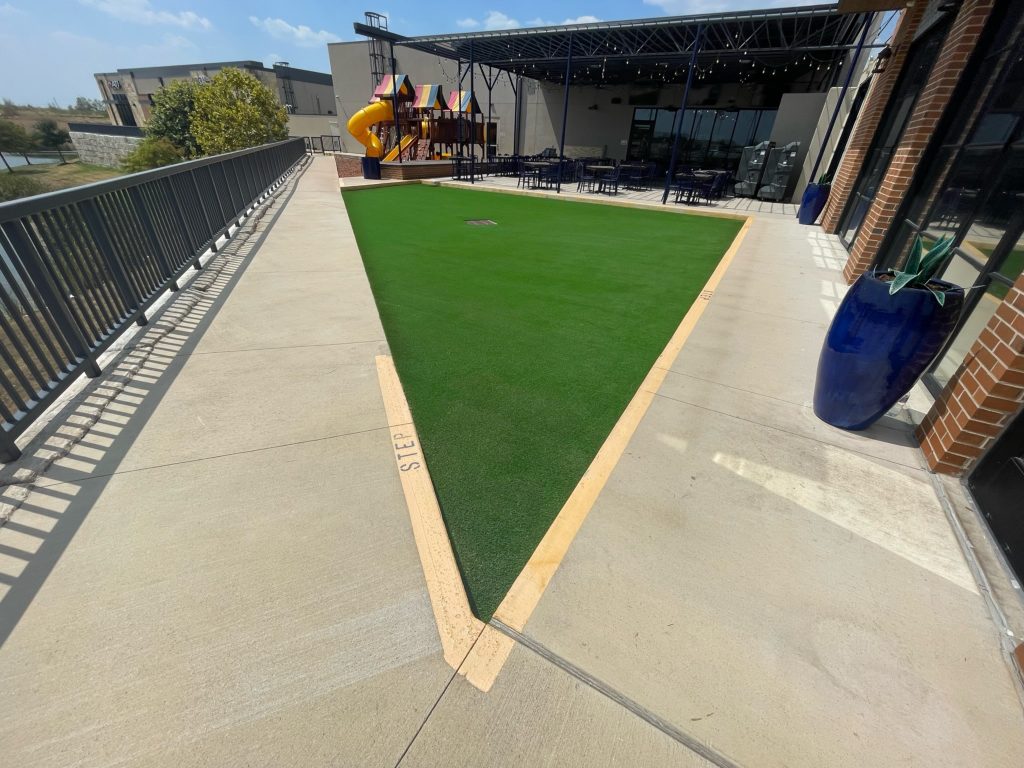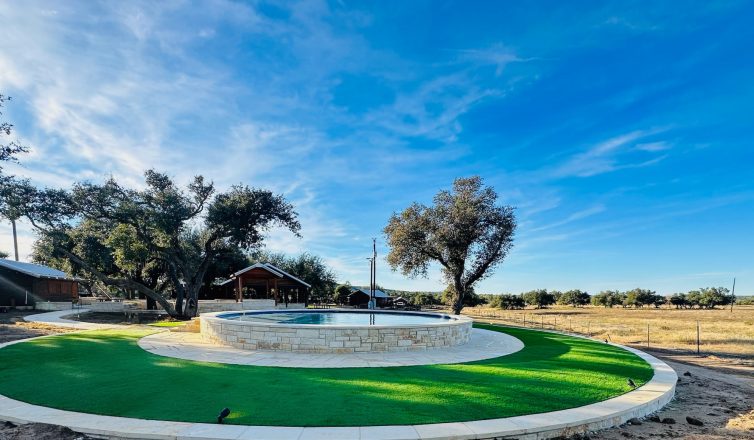Across the Southern U.S., cities and towns are turning to artificial grass fields as a modern solution for public spaces. From community parks to schoolyards, dog runs to event lawns, this shift is more than a trend; it’s a strategic move toward sustainability, cost efficiency, and civic pride.
With extreme weather, rising maintenance costs, and increasing demand for year-round usability, municipalities are choosing artificial turf not just for aesthetics but for its long-term value. In this post, we’ll break down the key advantages that make artificial grass fields a smart investment for communities large and small.
Quick Summary—Key Benefits at a Glance
- Major maintenance and cost savings
- Year-round, reliable play and usage
- Safer and more accessible surfaces for all ages and abilities
- Environmental wins: water savings, less chemical use
- Urban beautification and increased civic pride
- Flexible, durable surfaces for city events or heavy-use areas
- Consistent aesthetics in unpredictable climates
The top benefits of artificial grass fields and citywide turf
1. Major maintenance and cost savings for municipalities
One of the strongest motivators for cities to switch to artificial turf is the dramatic reduction in ongoing maintenance costs. Natural grass requires constant mowing, irrigation, fertilization, reseeding, and pest control, an expensive and labor-intensive cycle.
With synthetic turf, those needs disappear. Cities can reduce staff hours dedicated to mowing or repairs, cut down on utility bills, and eliminate the purchase of fertilizers and pesticides. For example, while a natural grass sports field may cost $30,000–$50,000 annually in upkeep, an artificial turf field requires a fraction of that once installed.
2. Year-round playability and community access
Artificial grass fields provide reliable use regardless of the weather. They don’t flood, get muddy, or brown in extreme heat. This is especially valuable in the South, where cities can face both scorching summers and seasonal downpours.
Less downtime means fewer canceled sports practices or games and uninterrupted public access to green spaces. For schools and community recreation centers, this also means maximized usage and better return on investment.
3. Water conservation and environmental benefits
Artificial turf systems dramatically reduce water consumption, a major issue for drought-prone areas in Texas and throughout the South. Replacing natural grass with turf can save millions of gallons of water per year, depending on the size of the area and local climate.
Additionally, synthetic grass eliminates the need for chemical fertilizers, herbicides, and pesticides, which often run off into storm drains and pollute local waterways. This makes it a fitting solution for cities working toward sustainability or resiliency goals.
4. Enhanced safety and accessibility for all
Turf provides a consistent, level surface that reduces tripping hazards and uneven terrain. It’s ideal for creating inclusive, ADA-compliant spaces such as playgrounds, walking paths, and public plazas.
For families with young children or pet owners, the appeal is obvious: cleaner surfaces, fewer bugs, and no muddy shoes or paws after a rainstorm.

5. Beautification and community spirit
Artificial turf offers a lush, green appearance all year long, regardless of drought conditions, irrigation bans, or extreme heat. This helps cities maintain visually appealing spaces that elevate civic pride and leave strong impressions on visitors.
Turf adds vibrancy to business districts, medians, plazas, and civic buildings. Events like parades or festivals shine on turf that stays event-ready without muddy patches or bare spots.
6. Flexible solutions for every city space
Not every city space is flat, open, or easy to mow. Artificial turf solves this by adapting to rooftops, splash pads, dog runs, shaded zones, and high-traffic corridors, adding green space to urban areas where it can be hard to come by.
Installations can be customized to fit oddly shaped or hard-to-maintain areas. Because installation is fast and downtime is minimal, cities can transform eyesores into functional, inviting public spaces in just days.
- Long-term return on investment
Though the upfront cost of artificial turf is higher than seeding grass, the long-term value is significant. Most turf systems last between 15-20 years depending on the type and amount of use, with minimal maintenance required. When compared with the recurring costs of maintaining live grass, cities see meaningful savings over time.
Turf projects also offer budget predictability. Without surprise irrigation failures, patching, or replanting expenses, finance teams can better plan year-over-year costs.
Bonus: Standout applications that go beyond the basics
Some of the most innovative uses of artificial turf go well beyond sports fields or dog parks. In Southern cities, especially, municipalities are now integrating turf into:
- Pedestrian-only corridors and shared streets
- Pop-up markets and food truck zones
- Rooftop terraces on public buildings
- “Green alleys” and urban right-of-ways
- Airport entryways, libraries, and schools
These creative installations transform underutilized or uninviting areas into gathering spaces that draw locals and visitors alike.
Frequently Asked Questions (FAQ)
Is artificial turf safe for children and pets in public parks?
Yes. Modern artificial turf is designed with safety in mind. Our turf is certified lead-free and non-toxic, often antimicrobial, and installed over shock-absorbing padding when used in playgrounds or pet areas.
How long does artificial turf last in high-traffic city spaces?
With proper installation and light maintenance, artificial turf fields last 10-15 years or more—even in heavily used locations like schools, parks, and rec centers.
Can artificial grass be recycled or is it environmentally friendly?
Many turf products today are recyclable and even include post-consumer recycled materials. Some manufacturers offer end-of-life recycling programs. Turf also contributes to sustainability goals by reducing water usage and chemical runoff.
Are there grants or funding options for municipal turf projects?
Yes. Some cities use water conservation rebates, green infrastructure grants, or capital improvement funds to support turf installations. Speak with your local parks department or sustainability office for options.
Final thoughts: Artificial grass fields are reshaping Southern cities
Artificial grass fields are doing more than replacing natural lawns; they’re reshaping how Southern cities plan, budget, and beautify. Whether it’s cutting maintenance costs, conserving water, or making spaces more usable for all, turf enables municipalities to meet modern demands with smarter infrastructure.
If you’re a city planner, parks director, or civic leader looking to improve your community spaces, artificial turf might be the strategic advantage you’ve been missing.
Ready to Transform Your City Spaces?
Contact one of our experts today to schedule a free municipal site evaluation and explore your options.
Lead your city’s next chapter of safe, green, and worry-free community spaces with Lone Star Turf.
